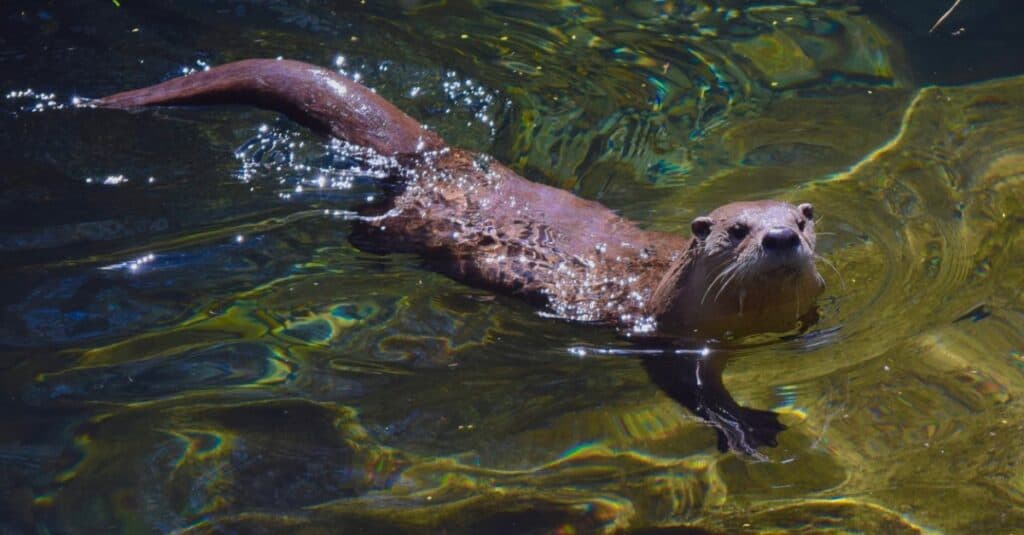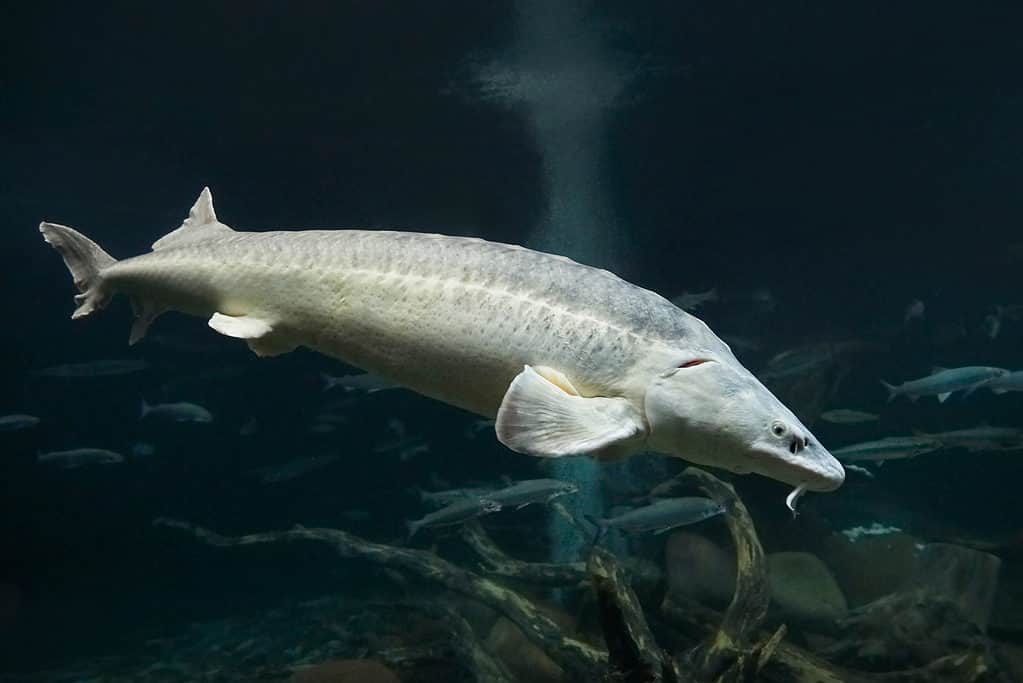Planning a trip to the lovely Santee River? If so, you may be wondering what critters inhabit these waters and if it’s safe to swim in.
In this guide, we’ll discuss a few of the animals that call Santee River home and provide some tips for safety on the river.
Read on to learn more.
About the Santee River
The Santee River, located in South Carolina, is the second largest river in drainage and flow occurring along the US east coast. Its total length is 143 miles, and it is formed by the meeting of the Wateree River and Congaree River, into Lake Marion, southeast of Columbia, SC. From this confluence, the Santee River flows southeast into the Atlantic Ocean.
About 10 miles before meeting the Atlantic Ocean, the Santee River splits into two channels, known as the North Santee River and South Santee River. These channels are separated by the 2-mile-wide Cedar Island.
This river is also the heart of the Santee River Basin, which is approximately 2,985 square miles and makes up one of the eight major river basins of South Carolina.
What Lives in the Santee River?
A complex and diverse group of plants, animals, fungi, and microbes form the interconnected ecosystems in and around the Santee River. To give you an idea of the scope of animal life connected to this river, the Santee National Wildlife Refuge is home to almost 300 species of birds, over 100 species of fish, 50 species of mammals, 54 reptile species, and 35 species of amphibians.
While we can’t dive into all of the beings that call the Santee River home, below we’ll take a look at five species of animals that live and thrive in this river.
What’s in the Santee River: Santee Crayfish (Procambarus blandingii)
Santee crayfish, crawfish, crawdads- whatever you call ’em, these freshwater crustaceans thrive in the slow-moving, lentic sections of the Santee River. Santee crayfish (Procambarus blandingii) are endemic to the Carolinas and currently their population is considered stable.
They are a large species of crawfish, cylindrical, with tan, brown, and/or green coloring with either dark speckles or light mottling. Their claws, called chelae, are slender in proportion to their size.
The Santee crawdad, like other crayfish, is omnivorous. Its primary diet consists of small aquatic animals including insects, fish, aquatic worms, and even smaller crawfish. They also eat algae and other submerged aquatic plants or plant-like organisms (sometimes algae are classified as plant-like protists).
River Otter (Lutra canadensis)
Habitat destruction, water pollution, and overhunting for pelts greatly reduced the population of North American river otters (Lutra canadensis) post-European colonization. By the early 1900s, river otters had disappeared from 11 states and suffered a severe population decline in 9 more. However, in the past 50 years, repopulation and conservation efforts have greatly recovered and stabilized the populations of river otters across North America.
In South Carolina, river otters are currently doing comparatively well. They are found across all of the state’s major river drainages. Their population is most abundant along the coastal marches and blackwater swamps which are rich in their food sources and ideal habitat protection.
Along the Santee River, you can most commonly see otters at the southeasternmost section of the river. These playful, social mammals can be seen along the banks and in the river where they rest, socialize, play, raise their young, and hunt. This adaptable species has a wide-ranging diet including crawfish, crabs, mollusks, fish, turtles, and waterfowl. Generally, slow-moving fish, crayfish, and crabs make up the bulk of the diet for Santee River otters.

If you visit the Santee River, you may be lucky and see a family of river otters.
©iStock.com/Kathryn Farley
What’s in the Santee River: Alligator Snapping Turtle (Macrochelys temminckii)
Several species of turtles call the waters and banks of Santee River home. One of the more distinctive, and perhaps most-feared, species is the alligator snapping turtle (Macrochelys temminckii).
These awesome aquatic turtles feature a large head, prominent and strong jaws with a hooked beak, and a distinctly spiked, dark-brown carapace (top of the shell). These incredible animals have a bite force of 1,000 pounds per square inch (psi). This bite force is certainly strong enough to snap right through our bones. However, it’s important to keep in mind that these beautiful critters aren’t out to get us. We certainly aren’t on their menu and as long as we don’t antagonize them, try to handle them, or disrespect their space, alligator snapping turtles aren’t a threat to humans.
Speaking of the menu, what do these prehistoric-looking turtles eat? This species of turtle is primarily carnivorous. They’ll eat a wide variety of small animals living in the Santee River and along its banks including fish, snakes, smaller turtles, frogs, crawfish, mollusks, water birds, baby alligators, and occasionally small mammals like rodents.

Alligator
snapping turtles
are wonderfully fierce and display well-armored shells.
©iStock.com/Sista Vongjintanaruks
What’s in the Santee River: Shortnose Sturgeon (Acipenser brevirostrum)
The shortnose sturgeon (Acipenser brevirostrum) exists in small populations in rivers and coastal waters from Florida to Canada. In the Santee River, this species hatches in the freshwaters of the Santee. Then, they travel to the Santee River-Atlantic Ocean estuaries where they spend most of their lives. An estuary is a partially enclosed, coastal body of water in which freshwater mixes with the ocean’s saltwater.
In the spring, adult shortnose sturgeons travel far upstream to spawn. After they spawn, they quickly move back to the estuaries which best support their diet and habitat needs. They occasionally spend their time as adults in the coastal waters of the Atlantic Ocean. However, the vast majority of their lives are spent in the waters where the Santee River and Atlantic Ocean meet.
This distinctive fish can grow up to 4.5 feet long and live over 30 years. It has five equally-spaced rows of bony plates that run the length of its body.
The shortnose sturgeon is currently endangered across its range. This is due to centuries of overfishing, habitat destruction, water pollution, bycatching (since a ban on fishing), dredging of its habitats, and damming.
This distinctive fish can grow up to 4.5 feet long and live over 30 years. This species has five equally-spaced rows of bony plates that run the length of its body.

The shortnose
sturgeon
is currently endangered across its entire range, including in the Santee River.
©pixel creator/Shutterstock.com
American Alligator (Alligator mississippiensis)
The Santee River is home to a thriving population of American alligators (Alligator mississippiensis). This species is the largest member of the Alligatoridae family of crocodilians. The largest of individuals can grow over 13 feet long and weigh up to 1,000 pounds. In the wild, the American alligator can live up to 70 years.
The diet of adult alligators consists mainly of fish, reptiles, amphibians, birds, and mammals. They hunt animals small enough to swallow whole and larger animals that they shake apart into manageable pieces. American alligators primarily hunt at night, dusk, and dawn. During the day, they primarily rest.

The Santee River is home to a healthy population of American alligators.
©iStock.com/Cindy Larson
So, is it Safe to Swim in the Santee River?
After learning about some of the critters that call the Santee River home, you may be wondering how good of an idea it is to swim in these waters. And since the animal you’re likely the most worried about is the American alligator, we’ll provide some statistics on alligator bites in South Carolina.
In South Carolina in 2022, two people died from alligator attacks. In over 20 years, South Carolina has recorded only 23 alligator bites. Over 100,000 alligators inhabit the waterways of South Carolina. So, you have a pretty good chance of seeing one near a waterway. In comparison, your chance of being attacked, especially fatally attacked, is exceedingly low. Alligator attacks in South Carolina are on the rise. But, this is in the context of humans continuously encroaching on the habitats of wildlife.
To put these attack statistics into further context, 1,015 people died from a motor vehicle collision in South Carolina in 2022 alone. In other words, the roads we travel to arrive at our swimming destinations are far more dangerous.
To further reduce your risk of an alligator attack, don’t swim alone. Also, swim well after dawn and well before dusk. Don’t swim if you see any alligators in the area, especially if they are over 4 feet long. If the area of the river is known to have large gators, it’s best to stay clear of that area. It’s safest to stay in areas where the water is clear and not stagnant. Of course, never antagonize or try to handle an alligator. Some experts think that one reason for rising alligator attacks is from humans feeding or otherwise unwisely interacting with them.
The photo featured at the top of this post is © Pollinator/CC BY-SA 3.0 – License / Original
Thank you for reading! Have some feedback for us? Contact the AZ Animals editorial team.







